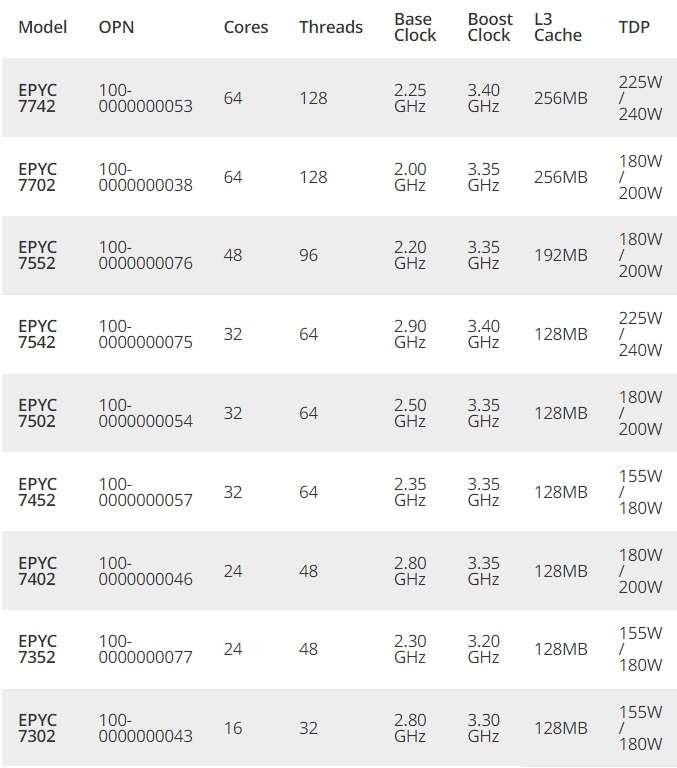Gigabyte has put up the product page for the brand’s latest MZ32-AR0 motherboard which contains the SKU list and block diagram for AMD’s EPYC (Rome) processors that are set to debut later today.
Like the first generation of EPYC (Naples) chips, the second-generation EPYC parts take advantage of eight memory channels meaning that you have up to 16 DDR4 memory slots at your disposal on a full-size motherboard. Being an enterprise product, the multi-core chips support both the RDIMM (Registered DIMM) and LRDIMM (Load-Reduced DIMM) standards. The official memory speed supported is DDR4-3200 in a 1 DPC (DIMM per channel) configuration and DDR4-2933 in a 2 DPC configuration.
Being based on AMD’s innovative Zen 2 processor architecture means that the latest EPYC processors support the high-speed PCIe 4.0 interface as well. On this occasion, EPYC 7002-series chips pack up to 128 PCIe 4.0 lanes and opens up the possibility to run a plethora of PCIe devices – whether they be graphics cards, SSDs or expansion cards.
AMD EPYC 7002-Series Specifications

A previous Eurasian Economic Commission (EEC) leak suggests that the EPYC 7002-series family will have up to 19 members with core counts that start from eight up to 64 cores. Before taking down the table, Gigabyte had previously listed nine chips so we can at least be certain those are confirmed. We’ll have to wait until the official launch to see whether there are more parts.
As we’ve known for a while now, the EPYC 7742 is AMD’s pride and joy. The 64-core, 128-thread chip was spotted sparring with a couple of Intel Xeon chips behind closed doors. Needless to say, AMD’s benemoth came out on top. The EPYC 7742 boasts impressive specifications, such as a 256MB L3 cache, 2.25 GHz base clock and 3.4 GHz boost clock. Gigabyte didn’t specify whether the boost clock value refers to a single-core boost or all-core boost. We’re inclined to think it’s the latter though. The TDP (thermal design power) really stands out as Gigabyte had two values for each EPYC part. For the time being, we’re uncertain what the two TDP ratings stand for.

